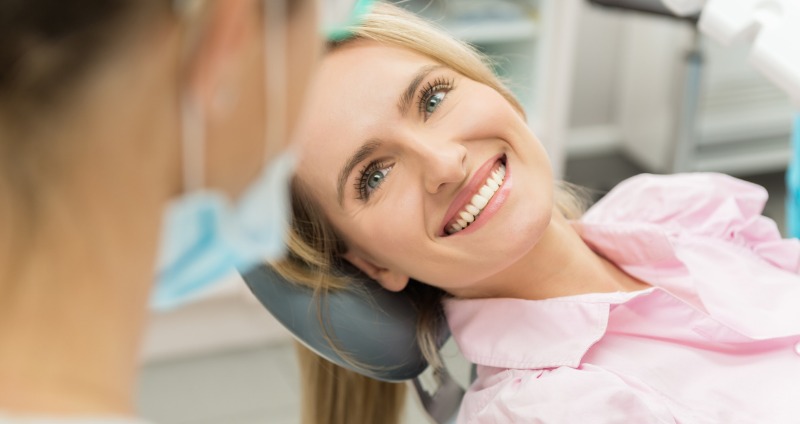
Inside braces are commonly called lingual braces where the bracket and wire are worn on the inside of the tooth. Lingual braces have been available since the 1970s, but it is over the last decade that they have increased in effectiveness and popularity.
Self Conscious about Wearing Braces
Adults who have decided to have braces later in life may be more inclined to order lingual braces. They may be more conscious about being seen at work or socially with braces because they have a misconception that braces are for teenagers.
Advantages of Lingual Braces
There are advantages of wearing lingual braces over traditional braces.
Appearance
The main advantage of lingual braces is their aesthetics. People can talk and have photos taken without anyone realising they are wearing braces. Some wearers can go the whole treatment without a friend of colleague knowing they had braces.
Always In
Unlike other concealed treatment options, lingual braces don’t need removing to eat or drink. In social settings, some people find it awkward to remove the trays before they can consume any food or drink.
Some patients like the fact that they don’t need to worry about the number of hours they (or more often their child) has or hasn’t worn their clear plastic aligners (Invisalign). Lingual braces can’t be misplaced and are always on and working on moving teeth into their desired location.
Staining
People who eat and drink the wrong foods or don’t brush as often as they should while wearing braces are at risk of white spots where the bracket was protecting their teeth. If this were to occur with lingual braces the white spots wouldn’t be noticeable on the inside of the teeth.
Disadvantages of Lingual Braces
There are some disadvantages of lingual braces.
Speech
It can take some time to get used to wearing lingual braces and during this time, your speech may change. Lingual braces are more likely to cause a lisp because the tongue has less room in the mouth. Some people need to spend time practising to speak around the braces before their speech returns to what it was before the braces were applied.
Cost
Lingual braces cost more than standard braces. Unlike conventional braces, lingual braces need to be custom made using an impression or digital scan of your teeth. The customised brackets and wires will then fit against the inside of the teeth. As the braces are adjusted, the teeth move into position. Lingual braces patients may also need to attend appointments more regularly for adjustments which also adds the extra cost.
Cleaning
Because the braces are on the inside of your teeth, it’s not as easy to see when you have food or plaque building up around the brackets on your teeth. While everyone wearing braces needs to be diligent about teeth cleaning, wearers of lingual have the added complexity of not being able to see the braces as well.
Not Completely Invisible
Lingual braces aren’t entirely concealed. People may be able to see them when you talk or laugh and if you need to wear them as part of treatment, the rubber bands will be visible.
Restrictions on What You Can Eat
Like traditional braces, lingual braces mean you can’t eat anything hard, chewy or crusty without risking breaking the wire or dislodging a bracket.
Considering Orthodontic Treatment as an Adult?
Get the smile you’ve always wanted with our innovative adult orthodontic treatment! Improve your smile and book an appointment!
Alternatives for Other Concealed Treatment Options
If you are self-conscious about the look of standard braces with metal brackets and wires, there are alternatives besides lingual braces.
Ceramic Braces
The bracket glued to each tooth is made from tooth-coloured porcelain rather than stainless steel. The archwire used between the brackets can be white making it difficult to see the braces from a short distance away.
Clear Plastic Aligners (Invisalign)
Clear plastic aligners sit over the teeth like a mouthguard. Every two weeks the trays are discarded and the next ones used to move teeth into the next position. Not all treatment is suitable for clear plastic aligners.
See an Orthodontist to Discuss your Options
Before deciding which treatment option is your preferred one, see an orthodontist. If your case involves a complex malocclusion (teeth crowding) or a bad bite, you may not be a suitable candidate for one of the more subtle-looking options.
Ask as many questions as you need to make a decision on which treatment option is best for you. You can make an obligation-free appointment at The Orthodontists on (08) 9364 8020 or contact us online, and an experienced orthodontist will discuss with you your options in detail. A referral from your dentist is not required.